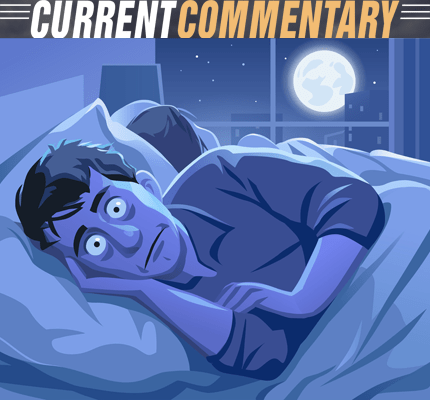
What Ethnographic Research Might Reveal About the Rhetorical Significance of Audiences
Our dreams often are unsettling. Sometimes, however, they also provide a unique picture of and insight into reality, giving us a clearer and more vivid understanding of current events.
Last night I had such a dream—a nightmare—that made me realize in a visceral (as opposed to intellectual) way the danger of Donald Trump’s rhetoric. In the dream, I was an ethnographer. Ethnography is the systematic study of people and cultures. Communication scholars such as Art Bochner document the insights that can be gained from ethnographic research. Through ethnographic research, a scholar explores cultural phenomena by observing society from the point of view of the subject of the study. An ethnography is a means to represent graphically and in writing the culture of a group.
In this dream, my ethnographic research project involved going underground and becoming part of the Trump movement, closely following those who attend his rallies. My experience as a rhetorician, when not dreaming, has been spent analyzing Trump’s discourse from a safe distance. But in my dream, for the first time, my understanding of his discourse was now intimate, personal, and grounded in the lived experiences of his audience.
With each rally, I became increasingly aware of—and subsequently horrified by—the audience’s enormous electricity and Trump’s ability to tap into, exploit, and arouse their emotions. What I was witnessing was the archetype of Aristotle’s concept of “pathos”— appeals to the emotions of the audience, eliciting feelings that already reside in them. Pathos is a communication technique used most frequently in rhetoric (in which it is considered one of the three modes of persuasion, alongside ethos and logos), as well as in literature, film, and other narrative art forms.
This is something I could not fully appreciate were I not engaged in ethnographic research.
...the source of Trump’s persuasion is perhaps as much if not more about audience than it is about the speaker—more about Trump’s supporters than about him.
Moreover, it made even more transparent what I knew intuitively prior to the dream: that the source of Trump’s persuasion is perhaps as much if not more about audience than it is about the speaker—more about Trump’s supporters than about him.
When I awoke, I was frightened. More than ever, I worry that President Trump will not and perhaps cannot be defeated until we come to grips with what Plato called the “soul of the audience.” Until then, we may not have the available means of persuasion to neutralize and counter the Trump effect.
Such a psychological revelation might allow those not part of Trump’s base to see the dangerous effects of his political persuasion on audiences and why therefore he must be removed (whether through impeachment or the ballot box). This larger and more serious rhetorical revelation could have a greater capacity to capture the attention of voters than simply continuing the barrage of well-rehearsed arguments with Trump supporters and the daily reminder about his lies, wrongdoing, and harmful policies—efforts to which many now are inoculated and tune out, and as a result seem not to have changed many minds.
My revelation made me wonder as well whether those who are among Trump’s ardent supporters are analogous to a religious cult, as some people already have claimed, and hence whether they can be deprogrammed.
In retrospect, my dream makes me believe that this is an opportune time for the media and political pundits to take an ethnographic approach to the Trump presidency and the rhetorical force of Trump’s discourse—to engage in what Clifford Geertz calls “thick description.” Some journalists have already done so, of course, but more work like this is needed.
Thick description will require focusing less time on analyzing and critiquing Trump’s speeches and Tweets, and spending more time attending the president’s rallies and recording what is happening from the perspective of audience members. By getting inside the heads of Trump’s supporters, much as ethnographers do, the public might get a sharper image of America’s political culture. And that may change minds and encourage those who are undecided to vote (against Trump) in 2020.
Of course, my dream was not ethnographic research, because I was dreaming, but it suggests that this is an important time for Communication scholars to continue conducting ethnographic research—research that may afford us a more enriched understanding of the rhetorical significance of audiences in the current political environment.
Indeed, dreams may be instructive.
Postscript: Following submission of this op-ed, on July 17 President Trump whipped up the crowd at a North Carolina rally with a racist attack against Representative Abdullahi Omar—one of the four House of Representatives members of color he earlier said should “go back to where you come from.” The subsequent audience chant, “Send her back,” provides more compelling evidence of the need to take an ethnographic approach to Trump’s audience.
References
Bochner, A. (2017). “The Night of and the Mourning after: Truth and Transference in the Election of Donald Trump,” Qualitative Inquiry, 24(5), 309-317.
Alexander Hurst, “Escape from the Trump Cult,” The New Republic, December 13, 2018.
https://newrepublic.com/article/152638/escape-trump-cult
Jared Yates Sexton, “The Weird World of a Donald Trump Rally,” World News, June 15, 2016
twitter dot com/i/moments/742975954860052481? lang=en


